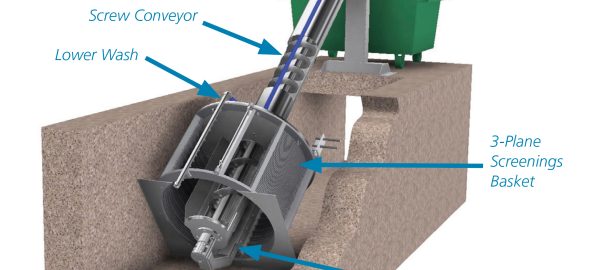
When wastewater reaches a water treatment plan from a sewer or truck that transports septic system wastewater, it goes through two main stages. Each stage has several steps. It starts with screening and a trip through the grit chamber and into the sedimentation tank. The second stage involves more filtering, disinfecting, and, possibly, dechlorination.
That’s just wastewater treatment. There are also processes specific to hydropower plants and factories like steel mills or pulp/paper mills. Each one requires water to be treated before it’s returned to the rivers, lakes, and oceans nearby. Each one involves screening to remove debris that could damage the pumps and other treatment equipment.
Screening is a critical first step. There are items in wastewater that can create blockages and damage water treatment equipment. Items like tampon applicators, diaper liners, sanitary pads, baby wipes, and condoms are not meant to be flushed. People do it anyway.
In a hydroelectric plant, a storm or high winds can send leaves, branches, and entire trees into the waterways. That’s why screening is an important first step in any of these industries.
How Does Screening Work?
As water enters a treatment plant or other facility, it goes through a variety of stainless steel screens. The size of the screening determines what the screen filters. You have wide screening to catch sticks, branches, and items like water bottles, soda cans, and plastic bags. Water is able to flow through, but the debris cannot.
As the size of the screens decreases, it catches smaller particles and items. Finer screen products can capture sludge, grease clumps, and other solids. Screens are paired with rakes that remove the materials from the screens to prevent clogging.
Wastewater enters the first screen and materials are caught on the screening. When the water level is high enough, the trash rake moves over the screen to remove the debris. This keeps water flowing through the screens. After the rake finishes its pass, the debris is moved to a collection bin. The trash rake makes a second pass where the rake is cleaned and readied for the next pass.
Debris is moved from the collection bin on a conveyor where it is washed and moved to a debris container. From the debris container, that debris could go to an incinerator, landfill, or composting area.
What Happens After Screening?
One thing screens cannot capture is the fine sand and grit that finds its way into wastewater. Sand from winter road maintenance, silt from rivers, and other fine materials pass the screens and settle into the bottom of the grit chamber where it can be removed.
At this point, there can still be tiny particles. They are processed in a sedimentation tank where they’ll combine to form solids that are removed through pumps. Sludge from sedimentation tanks may be processed into fertilizer pellets.
By the time the next stage of treatment starts, around 85 percent of the organic materials in wastewater have been removed. To remove the rest, it may be filtered through layers of stone or materials where bacteria consume the organic matter. The other option is to move the water into a tank where the wastewater is aerated and mixed with bacteria that will break down the rest of the matter. The remaining liquid is aerated again and pumped to a new tank where it will be mixed with chlorine to kill off any remaining bacteria.
In most states, it’s required now that the chlorine is removed before the water is returned to bodies of water to prevent harm to the plants and fish. If chlorine is not used to disinfect, ozone or UV lighting are used instead.
The treated water may end up back in watersheds where it is recycled as water that is piped to homes and businesses in nearby towns and cities. Before it can be sent back to homes, it is tested to make sure it is safe for consumption.
How Big or Small Are These Water Treatment Screens?
Lakeside Equipment sells Raptor Screening products. Rotary Strainer Screens are in a cylinder that sits horizontally. The wire openings start at 1/10th of an inch down to 1/100th of an inch for fine screening.
The Fine Screen can capture solids and organic materials in a cylindrical basket. There’s a Rotating Drum Screen that ranges from 1/4th inch to 1/50th inch in size. We also have trash rakes and other water treatment parts and equipment options.
Those are some of the options that can help you remove waste. Talk to our specialists to learn more and come up with the best screening products for your business’s or plant’s needs. Contact us to let us know how we can help.




